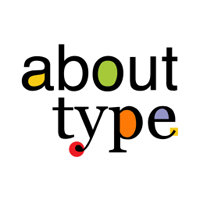Some Thoughts On Web Fonts by Stephen Coles

As promised, here is the first of two interviews used for The Future of Web Typography, a chapter in Smashing Book 2. This interview with Stephen Coles – presented here in exclusivity in its integral version – was conducted by Vivien Anayian at the end of last August, when Stephen still was Type Director at FontShop International, San Francisco office.
Also read Some Thoughts On Web Fonts by Yves Peters.
How would you describe the current state of Typography on the Web? What does the future hold for web fonts, web designers, type sellers, web font delivery services and type designers? What is the best approach of getting everyone on the same track and work together harmoniously? What role do you see FontShop and Web FontFonts playing in the future of typography on the web?
S T E P H E N C O L E S| It's an exciting time for typography on the web. It's 1985 all over again. New technology, new ways to use type, and new fonts made specifically for a new medium. It wasn't so exciting last year because there was no common standard and only bickering among font suppliers, browser makers, and users about how fonts on the web should work.
This all changed with two advancements: web fonts in the same way you do desktop fonts and they will work on all modern browsers.

What are some of the most horrible mistakes in typography on the web have you seen so far?
S T E P H E N C O L E S| After @font-face was announced I expected bad typography on the web. But, I'm pleased to see that I was wrong. Web designers are more sophisticated about type than they used to be, and tend to look at text in a more practical way, which is good for avoiding many of the pitfalls of bad typography. So I haven't seen many improper uses of fonts or widespread use of bad fonts. The mistakes are usually basic ones, like bolding a font that is already bold, using display fonts for text, or letterspacing text too tight and headlines too loose.
What advice would you give to designers on how to choose and decide if a typeface is suitable for use on the screen?
S T E P H E N C O L E S| The best thing about web fonts is that you can really try-before-you-buy. Most vendors let you sample the web fonts themselves on their site, so you can actually see what they look like in their end medium. It's true WYSIWYG (as long as you consider the major browsers/platforms). So my advice is to test them, at various sizes, and in various background colors to be sure that text is legible and readable for your needs. Test multiple browsers and OSes and ask the manufacturer if the fonts were "hinted" for Windows rendering. Without hinting, most fonts display very poorly on Windows.
What would be your personal choices when selecting solid alternatives for serif and sans serif web fonts? Could you list some font combinations for text & display that would work well on screen in most platforms?
S T E P H E N C O L E S| I think it's too early to give you my favorite combinations. There are really only a handful of text fonts that were designed or hinted to match Georgia, Verdana, and Lucida Grande in readability at small sizes. Most of those are from FontFont (FF Meta Serif Web, FF Tisa Web, FF DIN Web, FF Dagny Web) and Font Bureau (the RE – Reading Edge – fonts from Webtype.com). By the time this book is published, thought, I expect many more worthy fonts and I'll be reviewing them at Typedia or Typographica. There's an Alternatives to Arial article up on Typedia already.

One of the advantages of working with web fonts is that companies and organizations that use a certain typeface for their identity can now easily extend their brand to their online presence. Could you please, list some of the companies/organizations that indeed extended their identity online using the brand's typeface(s) with webfonts?
You did showcase some of the best uses of FontFonts on the Web, but so far it seems that mainly designers are revamping their sites with web fonts. There were only two corporations & organizations on your list.
S T E P H E N C O L E S| The early adopters of a technology like web fonts are always the designers, who try it with their easiest client first: themselves. That's why most of those early examples are portfolios or studio sites. Some good examples of corporate use have surfaced since then. My favorite is Jax Vineyards, who used FF DIN for their identity, echoing the modern design of their wine labels. This entire site is built with web fonts.
More here: www.delicious.com/tag/webfontfonts
Do you think that we'll see more corporations using their identity typefaces online as well? I see a few issues that they may face: the font in question is not available/offered as a web font or that typeface is not fit for the screen, licensing issues. What are your thoughts on those issues and what other problems the companies may encounter should they decide to extend their brand and use the same typeface(s) online? What would be the best way to deal with those issues?
S T E P H E N C O L E S| This is another problem that will be solved with time as more fonts are optimized and licensed for the web. My advice would be to add a good webfont to your corporate ID palette that complements or emulates one of your existing identity typefaces. That's better than simply going with the basic five "Web Safe" fonts and looking like everyone else.

In the ideal world would you like to see happen: more web font services, or a partnership between type sellers and foundries to form one unified web font delivery service, or the expansion of web safe fonts from the current limit of ten to perhaps a hundred thoughtfully designed and optimized fonts for screen, or another option?
S T E P H E N C O L E S| I think multiple services is good for competition and choice. It doesn't really hurt the market or user as much as multiple standards do. The option of a service or standalone WOFF fonts will be good for everyone.
What are your thoughts on Open Source Fonts?
S T E P H E N C O L E S| I applaud Google's effort with open source fonts. The fonts are decent. But there will always be professional type designers and makers in the commercial space offering better and more varied fonts. Type design is simply too difficult and specialized a craft to expect fonts to be free. In the end, users will have a vast selection of web fonts just like they have for the desktop. Now that delivering fonts through the browser isn't an issue, that's a good thing.
Stephen Coles in Stockholm (2010) © Laura Serra
Header image:Welcome to FontShop (2002) © Stephen Coles
Quotes set in Freight Text & Freight Sans.
-
 Cangji Fonts
Cangji Fonts
Brand: 仓迹字库
Area: China

-
 JT Foundry
JT Foundry
Brand: 翰字铸造
Area: Taiwan, China

-
 Handmadefont
Handmadefont
Brand:
Area: Estonia

-
·千图字体
-
 HyFont Studio
HyFont Studio
Brand: 新美字库
Area: China

-
 Minrui Type
Minrui Type
Brand: 敏锐字库
Area: China

- ·Benetton identity redesign
- ·Once Upon DESIGN: New Routes for Arabian Heritage
- ·Iconic Transport for London logo undergoes subtle redesign
- ·The Future of Sex poster
- ·He Invented a Font to Help People With Dyslexia Read
- ·Type terms: the animated typographic cheat sheet
- ·MC5 – Back in the USA album cover
- ·"David Bowie is turning us all into voyeurs" button
- ·Jim Nutt: Coming Into Character at Museum of Contemporary Art Chicago
- ·How to sell your typefaces




























